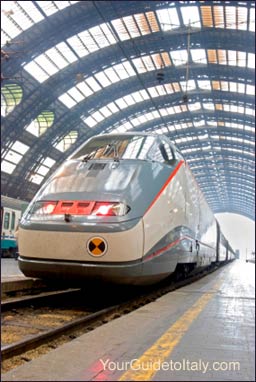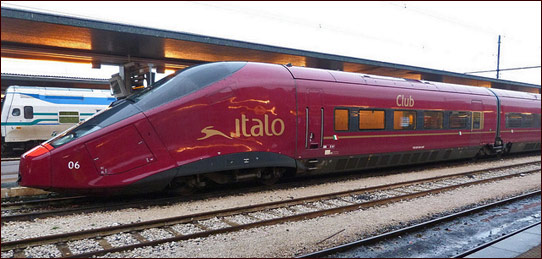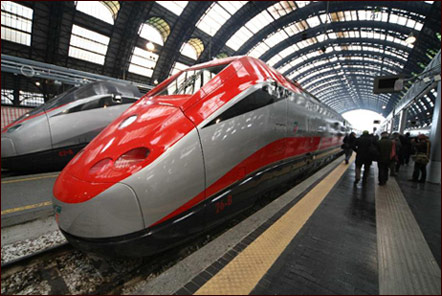.
.
.
.
The Italian railroad system, is run the by agency Ferrovia dello Stato Italiane (FS). The company operates both local (regional) and long-distance trains, covering 16,723 km (10,391 mi).
High speed trains in Italy run both on special high speed lines and on traditional lines, depending on the type of train. The high-speed network consists of two lines. The first line connects Milan to Salerno via Bologna, Florence, Rome and Naples, the second runs from Turin to Venice via Milan, and is in parts still under construction.
Main categories of Trains
Long distance
- Italo, a high-speed train operated by NTV (Nuovo Trasporto Viaggiatori, a private company) which makes a few stops in most important cities. There are three lines: the Turin-Salerno, which stops in Milan, Reggio Emilia (Mediopadana), Bologna, Florence, Rome and Naples; the Turin-Ancona, which stops in Milan, Reggio Emilia (Mediopadana), Bologna, Rimini and Pesaro; and the Venice-Naples, which stops in Padova, Bologna, Florence and Rome. The Italo train takes you from Milan to Rome in less than 3 hours, from Rome to Naples in less than an hour and from Venice to Florence in 2 hours.
- Frecciarossa, high-speed trains which run on special high speed lines operated by Trenitalia. Makes a few stops in major cities: Milan, Turin, Bologna, Florence, Naples, Rome. Their maximum speed is 360 km/h (220 mph). As a refernce, the Frecciarossa will take you from Milan to Rome in less than 3 hours, which, as compared to waiting times and delays when traveling by airplane, makes train travel highly competitive.




